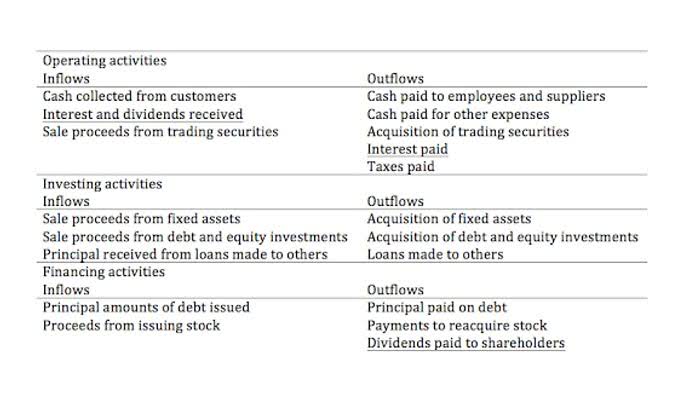
For instance, a company had an ARR of $10 million in the latest year, up from $8 million the previous year. But total revenue was $11 million, with $1 million in sales to one-time customers. You wouldn’t include that $1 million to adjusting entries calculate ARR because it would make the growth comparison appear higher than it really was. Accurate revenue tracking is paramount in understanding the performance and growth prospects of companies, such as SaaS providers, that rely on subscriptions. Maximizing Annual Recurring Revenue (ARR) is crucial for the success and growth of any subscription-based business. Effective strategies, optimized subscription models, and considering ARR in business planning can drive revenue growth and achieve long-term sustainability.

Leading Revenue Recognition Software: ASC 606 & IFRS 15

In order to properly calculate the metric, one-time fees such as set-up fees, professional service (or consulting) fees, and installation costs must be excluded, since they are one-time/non-recurring. Since ARR represents the revenue expected to repeat into the future, the metric is most useful for tracking trends and predicting growth, as well as for identifying the strengths (or weaknesses) of the company. Because ARR reflects only recurring revenue, it highlights the sustainability of growth more effectively than total revenue. The main difference between ARR and Monthly Recurring Revenue (MRR) is the measurement period. ARR gives a long-term view of recurring revenue, while MRR highlights short-term revenue expectations. The soft drink maker’s beverages are consumed by customers all over the world multiple times a day.
See your ARR in seconds with strategic finance software
NRR accounts for expansions, contractions, and churn, indicating how much revenue is retained from existing customers. High NRR (over 100%) suggests that upsells and renewals outweigh churn, which is an indicator of healthy growth. Using NRR alongside ARR can help startups better assess customer value and revenue stability. Furthermore, ARR plays a significant role in strategic decision-making, including valuation, fundraising, and forecasting. Investors often use ARR to evaluate a startup’s market traction and growth potential, making it a critical metric to secure funding.
- Recurring revenue does not include one-off purchases, and these should not be included in ARR.
- Note, that any annual contract payment included in your ARR will need to be divided by 12 and spread out over the entire year to get an accurate MRR with this method.
- Providing a more accurate picture of the company’s financial health than other metrics such as total revenue, it is widely used.
- All of those add-ons are examples of expansion revenue—and you will want to count them among your ARR.
- Multiply the Monthly Subscription Revenue by 12 (the number of months in a year) to obtain the ARR.
Example 3: Accounting for Downgrades
Additionally, annual recurring revenue calculations are often factored into financial statements they shouldn’t be, leading to misinformation. Generally, recurring revenue should only be reflected in your income or P&L statements. As the term implies, ARR is the annualized version of MRR, However, there are subtle differences. MRR represents the company’s recurring revenue on a microscale, is an operating metric, and can fluctuate considerably due the varying number of days in a month. Whether you want to refine your pricing strategy, improve customer retention, or optimize acquisition costs, having the right expertise is crucial.
Comparing ARR with other revenue metrics, such as total revenue or monthly recurring revenue (MRR), reveals key differences. Annual Recurring Revenue (ARR) provides valuable insights into a company’s financial performance. However, understanding how ARR compares to other revenue metrics, its advantages, limitations, and appropriate usage is crucial.
Customer Support
In all actuality, ARR considers only those contracts that last for at least a year, if not more. It can also stand for Annual Recurring Revenue, and it is the total recurring subscriptions of a business for one year. Businesses use this metric to determine the health of a company and where they need to improve. Annual recurring revenue, or ARR, is the amount of money a company can expect to receive each year from subscription and contract agreements with its customers, as well as other sources of recurring revenue. In addition, startups with a high ARR can use this metric to negotiate favorable terms when raising capital. Investors may pay a higher valuation for a startup with a high ARR, as it indicates more confidence in the company’s ability to generate consistent total revenue.

This would fuel engagement, customer satisfaction, and, therefore, retention. Therefore, the higher the LTV to CAC ratio, the more recurring revenue generated per customer outweighs the cost of acquiring the customer, which is integral to achieving profitable growth. The LTV/CAC ratio is a SaaS Bookkeeping vs. Accounting KPI that measures the cost-efficiency and sustainability of a company’s customer acquisition strategies. The annual recurring revenue (ARR) metric measures the recurring revenue of a SaaS company, expressed on an annualized basis.

The agency may have already rented the car to another customer based on that expectation! On the other hand, there are a growing number of subscription car services meant to replace buying or leasing for some consumers. This allows companies to understand not only the total ARR, but what is driving its growth or decline. To calculate ARR, multiply the total subscription revenue per customer by annual recurring revenue the total number of customers.
It’s usually the first indicator they look at to understand the company’s size, maturity, and volume of business. In particular,it helps them assess whether the company’s size fits into their investment specifications. 💡 According to US investment fund Point 9, an ARR of between $0.5m and $2.5m generally equates to a Series A, while an ARR of between $3m and $5m equates to a Series B.


